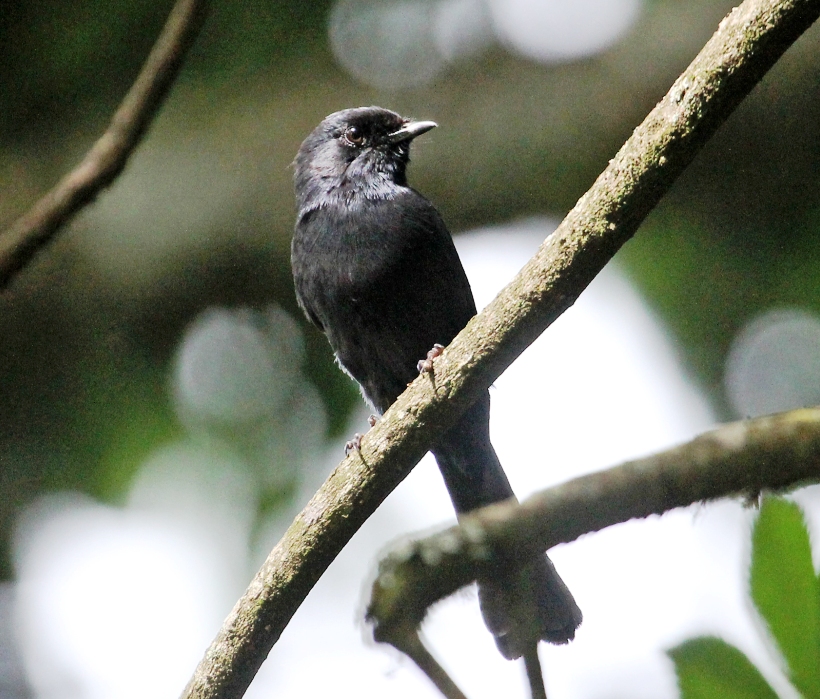- Home
- Our Story
- Safaris & Excursions
- Guides
- Gallery
- News
- Contact Us
Ol Donyo Sabuk National Park, locally known as Kilimambogo, is a hidden birding sanctuary just 85 kilometers northeast of Nairobi. Its ecosystem is centered around a solitary mountain clothed in dense montane forest at the peak — a haven for forest specialists and highland species.
Birding here is best experienced on foot, following the well-marked nature trail that winds all the way to the summit. The trek from the park’s main gate to the top is about 9 kilometers, with several scenic stopovers along the way. The first viewpoint offers sweeping panoramas of the landscape below — vast pineapple plantations, scattered inselbergs (isolated rocky hills), and the dramatic Fourteen Falls, one of Kenya’s most iconic waterfalls.
This blend of rewarding birdwatching and breathtaking scenery makes Ol Donyo Sabuk a perfect destination for day birding tours near Nairobi

Ol Donyo Sabuk birding reserve is one of the smallest national parks in Kenya covering an area of 20 square kilometers. This birding tour is one of the most popular eco tour with a minimum negative environmental impacts and maximizing benefits to the ecosystem through your visit. Ol Donyo Sabuk boast unrivalled range of ecosystems which is reflected in its diverse bird species.

Ol Donyo Sabuk National Park Birdwatching
Birdwatching tour in Ol Donyo Sabuk National Park is done while walking, which makes it more fun and rewarding, the gradient is ideal for any age bracket, Thus making Ol Donyo Sabuk National Park popular for Day Birding Tours in Kenya. Birdwatching tours in Ol Donyo Sabuk usually start at the main gate, there is a stretch of woodland and thickets, the area is quite productive, and the Purple-crested Turaco may be seen or heard calling from the top of the many fruiting trees. The rich multitude of habitats supports interesting bird species as you ascend to the peak, from eagles to turacos there is an enormous diversity of birds to be seen in the park. Birding is enjoyed throughout the year in Ol Donyo making it one of the superb birding hotspot in Kenya.
Birds species include; White-browed Sparrow Weaver, Green-winged Pytilia Parrot-billed Sparrow, African Pied Wagtail, Red-eyed Dove, Augur Buzzard, African Hawk-Eagle, Golden-winged Sunbird, Helmeted Guinea Fowl, Black-headed Oriole, White-bellied Tit, Ring-necked Dove Bronze Sunbird, Great Sparrowhawk, Superb Starling, Grey-headed Bushshrike, Black-backed Puffback, Tropical Boubou, Crowned Eagle, Kikuyu White-eye, Yellow-whiskered Greenbul, Purple-crested Turaco, Martial Eagle, Hinde’s Babbler (endemic to Kenya, African Finfoot, Eastern bearded Robin has been seen in Ol Donyo Sabuk National Park.
Ol Donyo Sabuk National Park Wildlife; Cape Buffalo, Bushbuck, Leopard, Olive Baboon, Mount Kenya Guereza, Vervet Monkey, Sykes’ Monkey, Kirk’s Dik-dik, Bush Pig, Common Duiker, Bohor Reedbuck, Rock Hyrax, Lesser Bush-baby, Tree and Ground squirrel, Aardvark, African Crested Porcupine, Slender Mongoose, Southern Rock Python, Savannah Monitor Lizard.
Ruma National Park is a hidden gem for, nature lovers, birdwatchers, photographers and wildlife enthusiasts, offering a rich diversity of species and some of Kenya’s most picturesque scenery. This delightful birding hotspot boasts a sensational mix of habitats, making it one of the country’s finest birding destinations. It is the best place to spot the rare Montane Blue Swallow and the iconic Roan Antelope, alongside a wide variety of other species. Thanks to its mild climate and natural landscapes, birdwatching in Ruma is productive throughout the year. For an even more rewarding experience, a visit to Ruma can be seamlessly combined with nearby birding treasures such as Lake Victoria, Busia Grasslands, Mount Elgon, Kongelai Escarpment, and Kakamega Forest, forming part of Kenya’s western birding circuit.

Paradise Lost is one of the best birding hotspots close to Nairobi, combining exceptional birdwatching with rich history and scenic beauty. The area lives up to its name, offering a peaceful natural environment with diverse habitats that support a wide variety of bird species.
The main attraction is the caves and waterfall, which were once used by the Mau Mau freedom fighters during Kenya’s struggle for independence. Today, the site is better known for its wetlands, grasslands, plantations, and forest, all of which provide superb birdwatching opportunities. Birding here is conducted on foot, allowing birders to fully immerse themselves in the landscape while exploring trails that can last between 7–8 hours.
Apart from birding, visitors can also enjoy the on-site coffee factory, where fresh blends are prepared and sold at affordable prices—a unique bonus to the Paradise Lost experience.

Waterbirds: Little Grebe, Yellow-billed Stork, African Spoonbill, Gray Heron, Great Cormorant, Reed Cormorant, African Darter, Little Bittern, Knob-billed Duck, African Black Duck
Raptors: African Fish Eagle, African Harrier Hawk, European Honey Buzzard, Lanner Falcon, Crowned Eagle, Wahlberg’s Eagle, Long-crested Eagle, Booted Eagle, Osprey, African Goshawk, Augur Buzzard, Eurasian Hobby, White-backed Vulture,
Forest & Woodland Species: Buff-spotted Flufftail, African Green Pigeon, African Pygmy Kingfisher, White-starred Robin, African Yellow Warbler, Grey-olive Greenbul (a rare, range-restricted highlight in Nairobi)
With its proximity to Nairobi, rich history, and birding diversity, Paradise Lost is a must-visit destination for birdwatchers looking for a full-day experience just outside the city.
